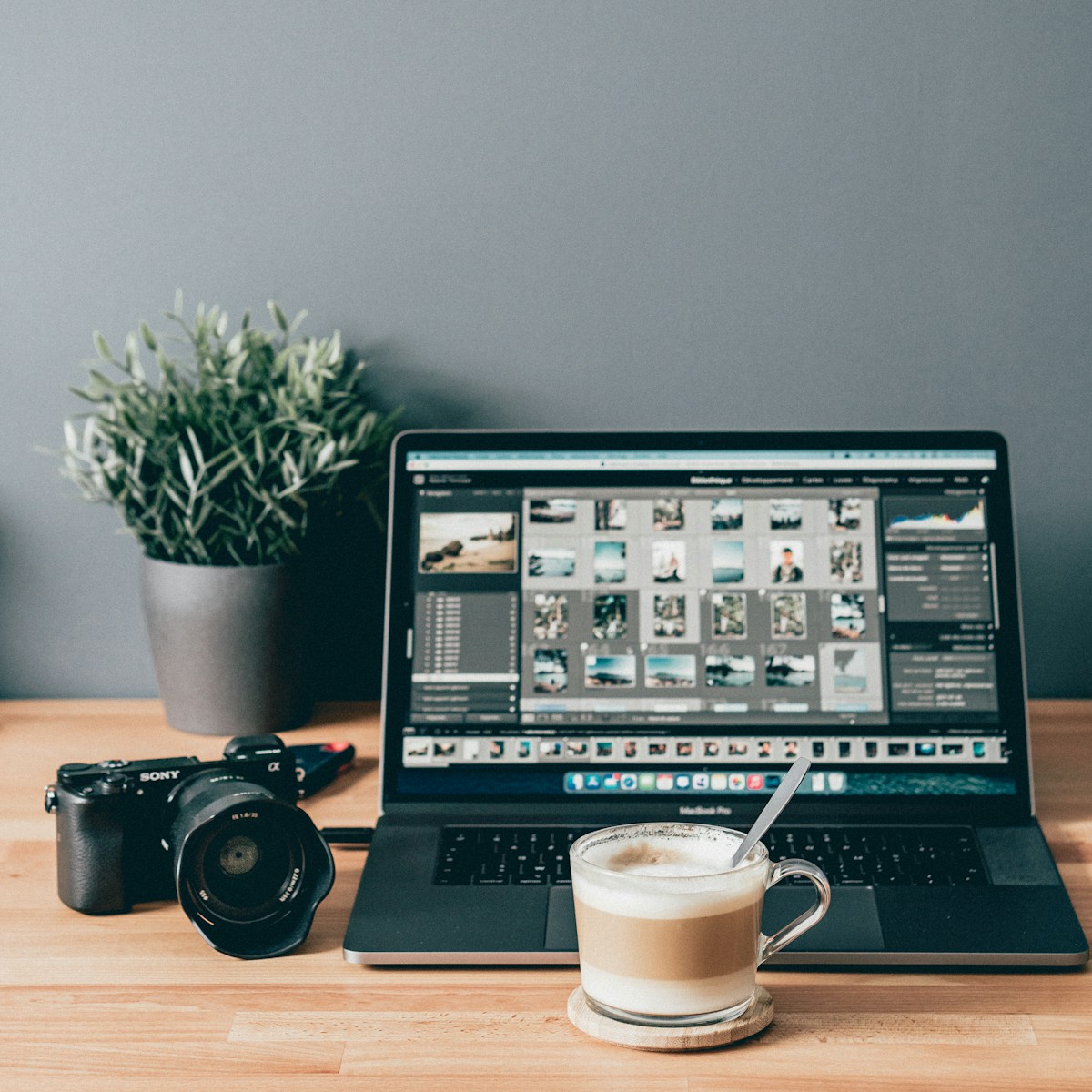AI image generators have become valuable tools for creating unique visuals without needing artistic skills. These programs use artificial intelligence to transform simple text descriptions into detailed images, giving users creative possibilities that weren’t available just a few years ago. The best AI photo generators in 2025 offer varying strengths in areas like artistic quality, text accuracy, and customization options.
The technology continues to evolve rapidly, with popular options like Midjourney, DALL-E, and Stable Diffusion leading the market. Each platform has its own approach to generating images, with some focusing on photorealistic results while others excel at artistic interpretations. Many now offer free versions that allow users to experiment before committing to paid plans with additional features.
1: Midjourney
Midjourney has established itself as one of the leading AI image generators in the market today. This powerful tool transforms text descriptions into high-quality visual artwork through advanced artificial intelligence algorithms.
The platform is known for producing images with exceptional artistic quality. Many users and experts consider Midjourney’s output to have a distinctive aesthetic that often resembles professional artwork rather than computer-generated images.
Midjourney operates primarily through Discord, which creates a unique community-based experience. Users type commands in a Discord channel and receive their generated images within the same environment, allowing for easy sharing and feedback from other members.
One of Midjourney’s strengths is its ability to understand complex artistic styles and concepts. The system can interpret detailed prompts about lighting, composition, medium, and artistic influence to create images that match specific visual requirements.
Recent versions have improved significantly in accuracy and detail. The system now better understands human anatomy, proportions, and complex scenes compared to earlier iterations.
For professional use, Midjourney offers subscription plans that provide faster generation times and more private creation options. This makes it suitable for commercial applications in design, marketing, and concept development.
While Midjourney excels in creating artistic and stylized images, some users note that other generators might perform better for specific tasks. Each AI image tool tends to have particular strengths in different areas of image generation.
The learning curve for crafting effective prompts can be steep for beginners. However, the active community provides numerous resources and examples that help new users improve their results quickly.
Midjourney continues to release updates that enhance its capabilities and address previous limitations. The development team actively works on improving the system’s understanding of complex prompts and expanding its creative possibilities.
2: Stable Diffusion
Stable Diffusion has emerged as one of the top AI image generators in 2025. It’s known for its exceptional customization capabilities, allowing users to create detailed images from text descriptions.
The platform offers a free online version called Stable Diffusion Online, making high-quality AI image generation accessible to everyone. Users simply type text prompts, and the AI transforms those words into visuals.
What sets Stable Diffusion apart is its flexibility. The technology is widely available across different platforms and applications, giving users multiple ways to access its capabilities.
Many users appreciate Stable Diffusion for its ability to create realistic images without requiring complex prompts. This makes it user-friendly even for beginners who are just starting with AI image generation.
DreamStudio, powered by Stable Diffusion, is particularly praised for its customization options. It gives users fine control over the generated images, allowing for detailed adjustments.
The technology behind Stable Diffusion is open-source, which has led to a thriving community of developers creating new tools and improvements. This open approach has helped Stable Diffusion stay competitive in the rapidly evolving AI image generation field.
According to recent reviews, Stable Diffusion consistently ranks among the top AI image generators. It often appears second only to Midjourney in professional evaluations of these tools.
For users seeking realistic photo generation, Stable Diffusion delivers impressive results. The images it creates can be remarkably photorealistic when the right prompts and settings are used.
As AI technology continues to advance, Stable Diffusion keeps pace with regular updates and improvements. This ongoing development ensures the platform remains relevant and effective for users with varying needs.
3: Adobe Firefly
Adobe Firefly is a generative AI platform that has gained attention in the digital art world. It offers tools for creating images, audio, and now video, all powered by AI technology. The service is designed to be commercially safe, making it a good choice for professional use.
Users can generate images by entering simple text prompts. The system then creates visuals based on these descriptions. With the recent release of Firefly 3, Adobe has continued to improve their AI capabilities.
One of the standout features of Adobe Firefly is its integration with other Adobe products. This makes it convenient for those already using Adobe’s creative suite. The platform is accessible through Adobe Express, which offers an easy-to-use interface.
Results from Firefly can vary in quality depending on the prompt. Some users report that it works exceptionally well for certain types of requests but may be less consistent than competitors like Midjourney for others.
The free version provides access to basic features, allowing users to experiment with the technology. This makes Firefly accessible to beginners who want to try AI image generation without a financial commitment.
Professional creatives appreciate that Adobe has designed Firefly to be commercially safe. This addresses copyright concerns that exist with some other AI image generators. Artists can use the output in professional projects with greater confidence.
Adobe Firefly’s user interface is intuitive, requiring minimal technical knowledge. The recent Image 3 model has improved the quality and versatility of the generated images. The platform continues to evolve as Adobe invests in AI technology.
4: DALL-E 2
DALL-E 2 was created by OpenAI and made a significant impact as one of the first mainstream AI image generators. This tool can create realistic images and art based on text descriptions provided by users.
The system uses natural language processing to understand what users want. It then generates images that match these descriptions, often with impressive accuracy and detail.
DALL-E 2 is known for its photorealistic capabilities. It excels at creating images that look like actual photographs, which sets it apart from some other AI image generators.
Users can try DALL-E 2 for free, making it accessible to beginners. The platform has a straightforward interface that helps new users create images without needing technical expertise.
5: Microsoft Designer
Microsoft Designer is a graphic design app that helps users create professional-quality content quickly. It includes a powerful AI image generator that can transform text descriptions into images in seconds.
The platform allows users to create various designs, including social media posts, invitations, digital postcards, and graphics. Its AI image generator is free to use, making it accessible to everyone.
Microsoft Designer’s image creation capabilities range from photos to pop art. Users simply enter a text description, and the AI generates visual content that matches their vision.
The tool is particularly useful for storytelling, graphic design, and advertising. It helps bring creative ideas to life without requiring advanced design skills.
In recent tests, Microsoft Designer has ranked among the best AI image generators available. However, according to ZDNET, Google’s ImageFX has recently surpassed it in performance.
Microsoft Designer stands out for its user-friendly interface and integration with other Microsoft products. This makes it a convenient choice for those already working within the Microsoft ecosystem.
The platform continues to improve its AI capabilities, offering more refined and accurate image generation over time. Users can expect high-quality results that closely match their text descriptions.
For those looking to create stunning visuals quickly, Microsoft Designer offers a balance of accessibility and professional-quality output. Its free AI image generator makes it an attractive option for both casual users and professionals.
6: Canva’s Text to Image
Canva’s Text to Image generator has become a popular tool for creating custom visuals in 2025. This AI feature allows users to type descriptive prompts and receive generated images based on their specifications.
The Text to Image tool is integrated directly into Canva’s platform, making it accessible alongside their other design features. Users don’t need to switch between different applications to create and incorporate AI-generated images into their projects.
Canva offers three AI image generation options: Magic Media (their native text-to-image tool), DALL-E by OpenAI, and Imagen by Google Cloud. Each provides slightly different results based on the same text prompts.
For specific projects like coloring pages, users can create custom illustrations by describing exactly what they want. The AI can generate outlines of cats, landscapes, or any other subject matter needed for creative projects.
The tool understands complex queries and offers customization options to refine the generated images. Users can adjust styles, colors, and other elements to match their design needs.
Canva’s interface makes the AI image generation process straightforward even for beginners. The text prompt field is clearly marked, and generated images appear quickly for selection.
For content creators looking to stand out, this tool provides unique visuals that aren’t stock photos. The AI can create images that perfectly match the creator’s vision rather than settling for close approximations from photo libraries.
The integration with Canva’s other design tools allows for seamless editing after generation. Users can add text, adjust colors, or combine multiple AI-generated images into a single cohesive design.
Business users find this tool valuable for creating custom graphics for marketing materials, presentations, and social media content. The professional quality of the generated images helps maintain brand standards.
7: PixNova AI
PixNova AI is an all-in-one AI photo generation and design platform. It allows users to generate stunning photos, edit images, and swap faces with simple text prompts.
One of the most appealing aspects of PixNova AI is its user-friendly interface. Users don’t need Photoshop skills or technical expertise to create impressive images. The platform is designed to be accessible to beginners while still delivering professional-quality results.
The AI Body Generator is a notable feature that creates human body photos from text descriptions. This tool eliminates the need to search the web for specific body types or poses, as the AI can generate them on demand.
PixNova AI includes essential photo-editing tools in one convenient location. Beyond basic image generation, it offers enhancement features and specialized tools for changing outfits and hairstyles with a single click.
Many users find PixNova’s capabilities both practical and engaging. The platform has developed a reputation for being somewhat addictive due to the creative possibilities it offers and the quality of its output.
The service is completely free to use, which sets it apart from many competitors that charge subscription fees. This accessibility makes it an attractive option for casual users, students, and professionals on a budget.
According to user feedback, PixNova AI consistently delivers impressive results. Some users even describe it as the best AI image combiner they’ve experienced, praising its reliability and output quality.
The platform continues to expand its offerings with new tools and features. Its comprehensive approach to AI image generation makes it a valuable resource for creative projects, social media content, and professional design work.
8: DreamStudio
DreamStudio is an AI image generation platform created by Stability AI. It offers users a practical way to create AI-generated images through text prompts or by uploading reference images.
The platform uses Stable Diffusion technology, which has become known for its customization options. Users can adjust various parameters to fine-tune their image outputs according to their specific needs.
DreamStudio provides a variety of AI art styles to choose from. This gives creators flexibility when developing different types of visual content.
The service operates on a credit-based system. New users receive some free credits to start with, and additional credits can be purchased as needed for continued use.
For those seeking alternatives to Adobe Creative Cloud, DreamStudio offers prompt-driven image generation capabilities. This makes it accessible to creators who might not have advanced design skills.
DreamStudio has also launched a chatbot called Stable Assistant. This tool helps users generate and edit images while providing access to Stability AI’s latest features.
The platform is available as a mobile app on Google Play, making AI image creation possible on smartphones. This accessibility allows creators to generate AI art on the go.
For professionals needing to integrate AI-generated images into existing photos, DreamStudio offers suitable tools. This functionality is particularly useful for design projects requiring composite imagery.
DreamStudio stands out for its customization capabilities among AI image generators. Users looking for precise control over their AI-generated artwork may find it particularly valuable.
9: Shutterstock AI Image Generator
Shutterstock’s AI Image Generator stands out as a powerful tool for creating AI-powered images from text prompts. The platform uses cutting-edge models like DALL-E 3 and Imagen to produce high-quality visuals.
Users can easily convert their text descriptions into innovative AI photos within seconds. This accessibility makes it appealing for both beginners and experienced creators alike.
The generator offers hundreds of creative AI art styles to choose from. This variety allows users to experiment with different visual aesthetics and find the perfect look for their projects.
Shutterstock designed their tool with creators in mind. The system enriches prompts to help users get the best possible results from their text descriptions.
Another notable feature is support for over 20 languages. This multilingual capability makes the tool accessible to a global audience of creators.
The AI Image Generator provides more than 100 artistic styles. These options give users tremendous flexibility in how their final images appear.
Shutterstock has recently upgraded their system to include DALL-E 3. This responsibly trained text-to-image AI model from OpenAI generates diverse and stunning images from textual descriptions.
The company positions their generator among the best AI models in the market. Their subscription-based pricing model gives users access to these premium AI capabilities.
For enterprises, Shutterstock’s AI Image Generator offers enhanced creative potential. Businesses can leverage this technology to produce consistent, branded visual content quickly.
According to industry reviews, Shutterstock’s offering ranks among the top AI image generators for 2025. It competes with other popular options like Midjourney, Stable Diffusion, and Adobe Firefly.
The platform aims to balance powerful capabilities with user-friendly design. Even those new to AI image generation can achieve impressive results with minimal learning curve.
10: PicLumen
PicLumen has emerged as one of the leading AI image generators in 2025. This platform allows users to convert text descriptions into vivid images with remarkable ease. The service has gained popularity for its user-friendly interface and high-quality output.
Users simply type their idea, select a model, and watch as PicLumen transforms their text into visual art. This straightforward process makes it accessible even for people with limited technical knowledge.
The platform offers free options for AI art creation, making it available to a wide audience. This accessibility has contributed to its growing user base among both casual creators and professionals seeking quick visualization tools.
PicLumen stands out with special features like image-to-image transformation and reference options. These tools give users more control over their final creations and help achieve more precise results.
The service generates images in real-time, allowing for immediate visualization of concepts. Users can also customize styles to match their specific needs or aesthetic preferences.
One notable strength of PicLumen is its ability to create images in a Pixar animation style. This distinctive capability makes it particularly useful for those working in certain creative fields or looking for that specific visual approach.
According to recent evaluations, PicLumen ranks among the top AI art generators of 2025. Its combination of quality output and ease of use has earned it recognition in multiple industry reviews.
The platform balances sophisticated AI technology with an intuitive interface. This makes advanced image generation accessible without requiring users to understand the complex AI systems working behind the scenes.
For professionals needing to quickly visualize concepts, PicLumen offers valuable time-saving benefits. Its ability to transform text descriptions into professional-quality visuals within seconds helps streamline creative workflows.
Understanding AI Photo Generators
AI photo generators have revolutionized how we create and edit images. These tools use complex algorithms to produce realistic images from text descriptions or to modify existing photos in seconds.
How AI Photo Generators Work
AI photo generators rely on machine learning models trained on millions of images. These models learn patterns and relationships between images and text descriptions. When a user enters a prompt, the AI analyzes the text and generates corresponding visual elements.
Most popular generators like DALL-E 3, Midjourney, and Stable Diffusion use diffusion models. These work by gradually removing noise from random pixels until they form a coherent image matching the description.
The quality depends on several factors. The complexity of the prompt matters – detailed descriptions typically yield better results. The AI’s training dataset size and diversity affect output quality too.
Modern AI systems can now handle complex requests like “a cat wearing a space helmet on Mars” with impressive accuracy and artistic style.
Benefits of Using AI in Photo Creation
AI photo generators offer significant time savings compared to traditional image creation. What might take hours in Photoshop can be done in seconds with AI tools.
These tools make professional-quality image creation accessible to non-designers. Anyone can create stunning visuals without technical expertise or expensive software.
AI generators excel at creating unique imagery that might be impossible to photograph. Fantasy scenes, futuristic concepts, or abstract ideas can be visualized easily.
Many platforms like Freepik offer generous free tiers with up to 40 free AI images daily. This makes experimentation affordable for hobbyists and small businesses.
AI-generated images can be customized extensively. Users can specify artistic styles, lighting conditions, compositions, and other details to match their vision perfectly.
Choosing the Right AI Photo Generator
Finding the perfect AI photo generator depends on your specific needs and skill level. The right choice balances quality, usability, and features that match your creative goals.
Features to Look For
User Interface is critical when selecting an AI image generator. Beginners should prioritize platforms with intuitive designs and clear instructions. Advanced users might prefer tools with more customization options.
Text-to-image accuracy varies significantly between platforms. Ideally, choose generators like Ideogram that accurately interpret complex prompts and render text correctly within images.
Style options allow for creative flexibility. Some generators excel at specific artistic styles – Midjourney is noted for artistic results, while others offer versatility across different visual approaches.
Editing capabilities determine how much you can refine generated images. Look for features like inpainting, outpainting, and style adjustments.
Cost structure ranges from free tiers with limitations to subscription models. Consider your usage frequency when deciding between pay-per-image or unlimited generation plans.
Evaluating Performance and Accuracy
Resolution quality directly impacts image usability. Premium generators typically offer higher resolution outputs suitable for professional applications and printing.
Prompt handling effectiveness varies widely. Test how well the AI interprets detailed instructions. DALL-E 3 excels with complex queries, while other platforms might require simpler prompts.
Generation speed matters for workflow efficiency. Some platforms deliver results instantly, while others might queue requests during high-demand periods.
Consistency between requests helps with project continuity. Test generators with similar prompts to evaluate if they maintain coherent styles and quality.
Customization depth determines creative control. Stable Diffusion leads in customization options for users who want precise control over their generated images.
Frequently Asked Questions
People often have questions about AI image generators and how to get the best results from them. Here are answers to some common questions about these powerful tools.
What are the top-performing AI tools for generating realistic images?
Midjourney consistently ranks as one of the best AI image generators for creating highly detailed and realistic images. Its latest version offers exceptional image quality and artistic interpretation.
Stable Diffusion is another top performer, particularly popular among technical users who want more control over the generation process. It offers open-source flexibility with professional-quality outputs.
DALL-E 2 from OpenAI provides excellent photorealistic capabilities with strong understanding of prompts. Many users find it intuitive for creating lifelike images from text descriptions.
How can one create a lifelike headshot using an AI photo generator?
To create realistic headshots, users should provide detailed prompts including desired lighting, background, and facial expressions. Specifying professional photography terms like “portrait lens” or “studio lighting” often improves results.
Microsoft Designer and Adobe Firefly excel at creating professional-looking headshots. These tools have specific models trained on portrait photography.
For best results, users should experiment with different prompt variations and settings. Many generators allow adjustments to face details, age, expressions, and clothing to achieve the desired look.
Are there any AI image generators available online at no cost?
Google’s ImageFX offers free access to AI image generation with high-quality results. It provides a limited number of generations per day without requiring payment.
Stable Diffusion has free implementations available through various web interfaces. These free options typically have usage limits or slightly lower quality than paid versions.
Some tools like DALL-E offer free trial credits for new users. These allow people to test the capabilities before committing to a subscription.
Which AI image generators allow for the creation of images based on existing photographs?
Adobe Firefly excels at creating variations of existing images while respecting copyright. It allows users to upload reference photos and generate similar but unique images.
Stable Diffusion offers “img2img” functionality, which transforms existing photos into new artistic interpretations. This feature is popular for creating stylized versions of personal photographs.
Several tools now include “inpainting” features that can modify specific parts of an image while leaving the rest intact. DreamStudio’s implementation is particularly noted for its effectiveness.
What advanced features does Leonardo AI offer in image generation?
Leonardo AI provides extensive customization options for image generation, including fine control over artistic styles and composition. Users can adjust multiple parameters to achieve precise results.
The platform offers training on custom datasets, allowing users to create images that match specific visual styles or brand guidelines. This makes it valuable for commercial applications.
Leonardo AI includes collaborative features for teams working on visual projects. Multiple users can contribute to and refine image generations together.
How effective are AI photo editors in enhancing and retouching images?
AI photo editors are now remarkably effective at automatic retouching tasks. These include skin smoothing, background removal, and color correction. Many can achieve professional-quality results with minimal user input.
Tools integrated with AI generators can seamlessly combine generation and editing. For example, Adobe’s suite combines Firefly’s generation capabilities with Photoshop’s editing tools.
Most AI editors now include one-click enhancement options that analyze and improve images automatically. These features save significant time compared to manual editing while maintaining natural appearances.







